From D to E, the Cunningham Jaguars Had Similar Heritage but Different Roles
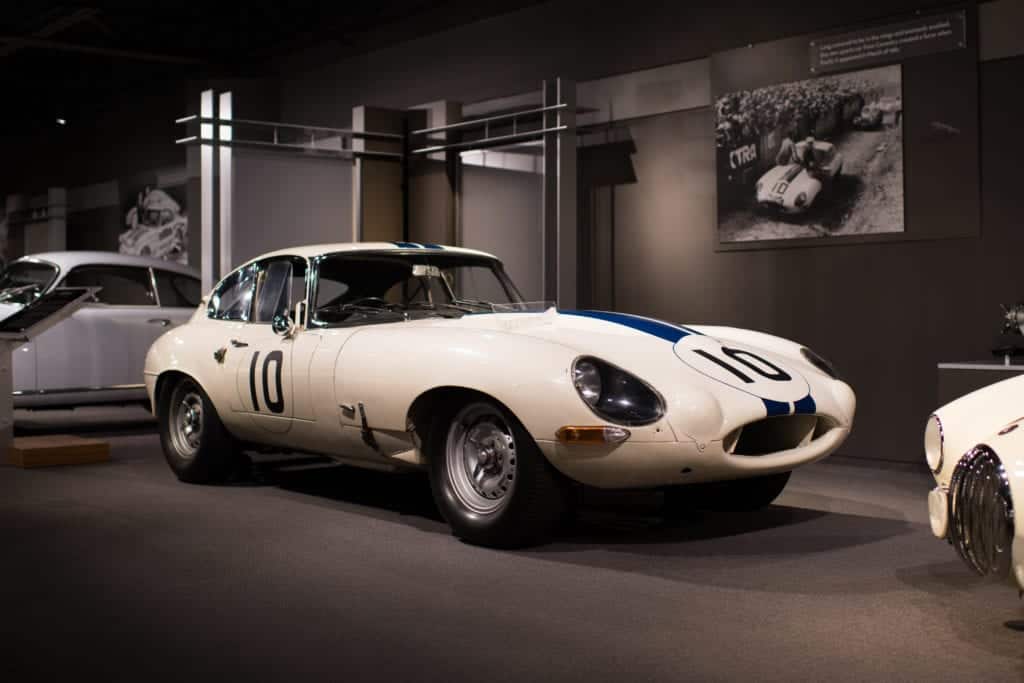
Jaguar is back in racing, with a twist. The automaker that won the 24 Hours of Le Mans seven times — between 1951 and 1990 — and fielded a Formula 1 team for a half decade has a new horizon. Joining the likes of Audi, Renault and Andretti Autosport, Jaguar is currently racing electric Formula E cars.
Then there’s the I-Pace eTrophy, a Formula E support series that pits 20 Jaguar I-Pace electric cars against each other, presaging the 400-horsepower model’s late 2018 production launch. Watch your wattage.
This new chapter in Jaguar racing warrants a look back at the company’s success on the track and its stylistic evolution. In the mid-1950s the company’s D-Types challenged Ferrari at LeMans and won other racing honors. The next-generation car, the E-Type, posted some notable track performances, but is best known for stunning styling that influenced automotive design for a generation. Specimens of both sit in The Collier Collection at Revs Institute, and sharply illustrate the different primary purposes of the two generations — winning races vs. winning sales.
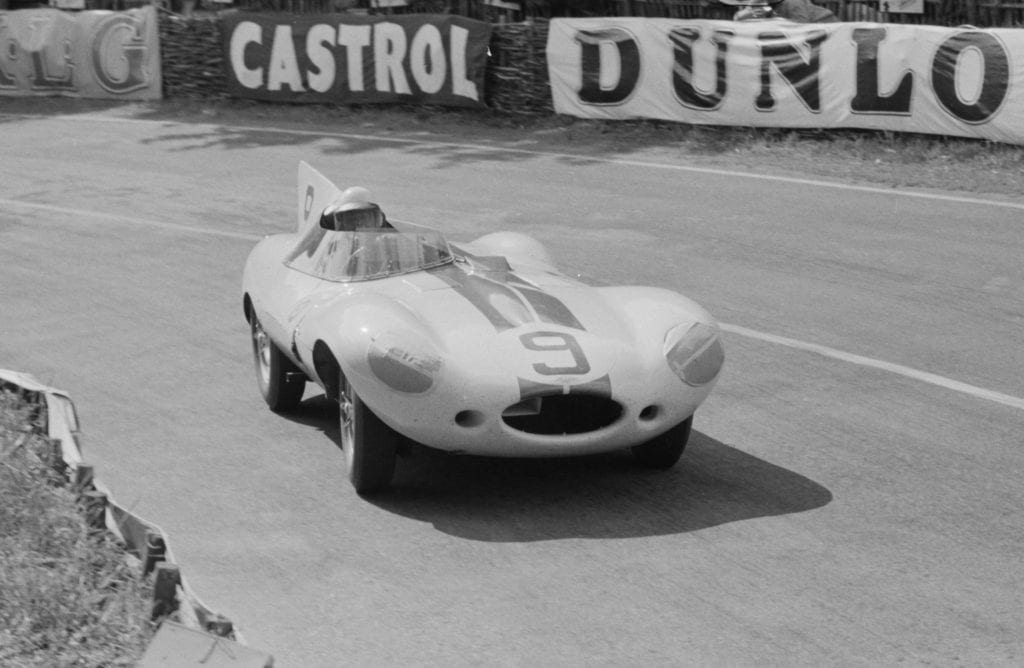
Despite being British as high tea and clotted cream, Revs’ two Jaguars are painted in U.S.A. racing colors: white with a pair of blue stripes running nose to tail. American sportsman Briggs Cunningham, who owned both cars back in the day, insisted on “flying the flag” when racing cars of his own making and the cars he purchased.
Jaguar won the 24 Hour of Le Mans in 1951 and 1953 with its space frame C-Types. For 1954, Jag engineers in Coventry created the D-Type with a monocoque structure and load-bearing external panels.
A trio of D-Types failed to beat Ferrari in 1954, but 1955 started a three-year run when the Jags would conquer on Le Mans’ Sarthe circuit.
Chassis XKD507, entered by Cunningham with U.S.A. colors, was powered by Jaguar’s famed twin-cam inline-6 with a 3.4-liter displacement and three Weber two-throat carbs that produced 270 horsepower at 6000 rpm. Alas, the car had a faulty distributor that would have the car parked in the seventh hour.
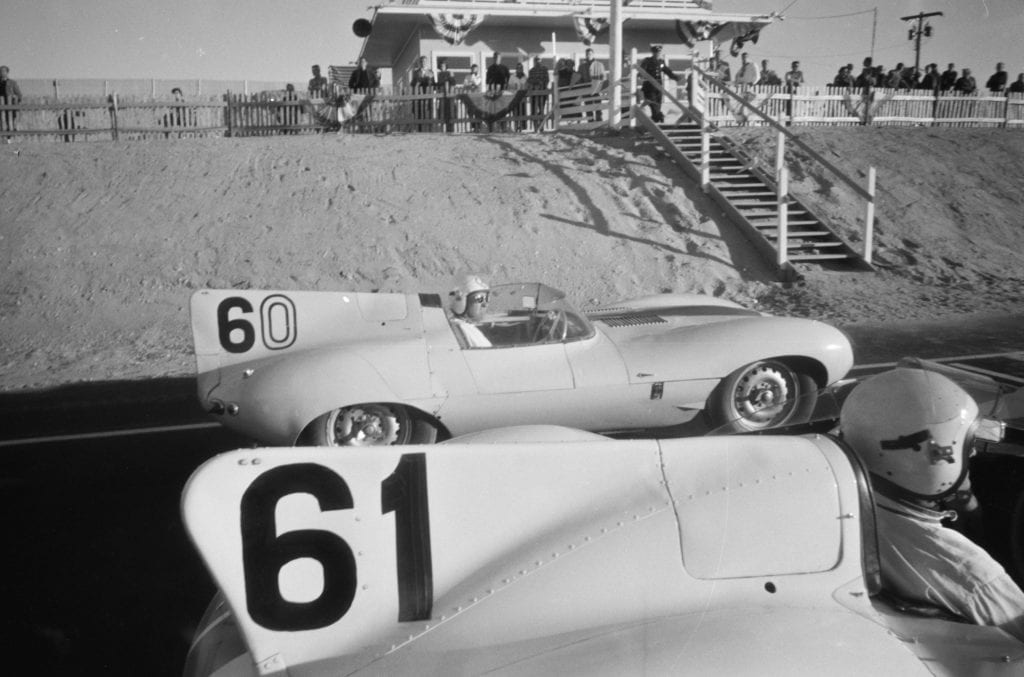
Cunningham’s D-Type XKD507 was “works blessed,” meaning it had factory support to represent Jaguar on U.S. race tracks. Sherwood Johnson won with it at Watkins Glen and Hagerstown, Maryland. Walt Hansgen raced it to the Sports Car Club of America’s (SCCA) D-Modified championship in 1956 and 1957. On Bonneville’s Salt Flats it hit 185 mph.
Sitting nearby it at Revs Institute is another white-and-blue racing Jaguar, 1962 E-Type serial number 860630. The 71 D-Types built by Jaguar, which sold for a then-lofty $9875 each, were pure race cars. The E-Type was pure production, but modified for racing. You can see its D-Type lineage: the nose and flowing shape, a monocoque structure and the famed inline-6, though now the chassis had independent rear suspension. But the E-Type’s styling is far more elegant, epitomizing the long front end and short rear deck later popularized by Ford’s Mustang and other cars.
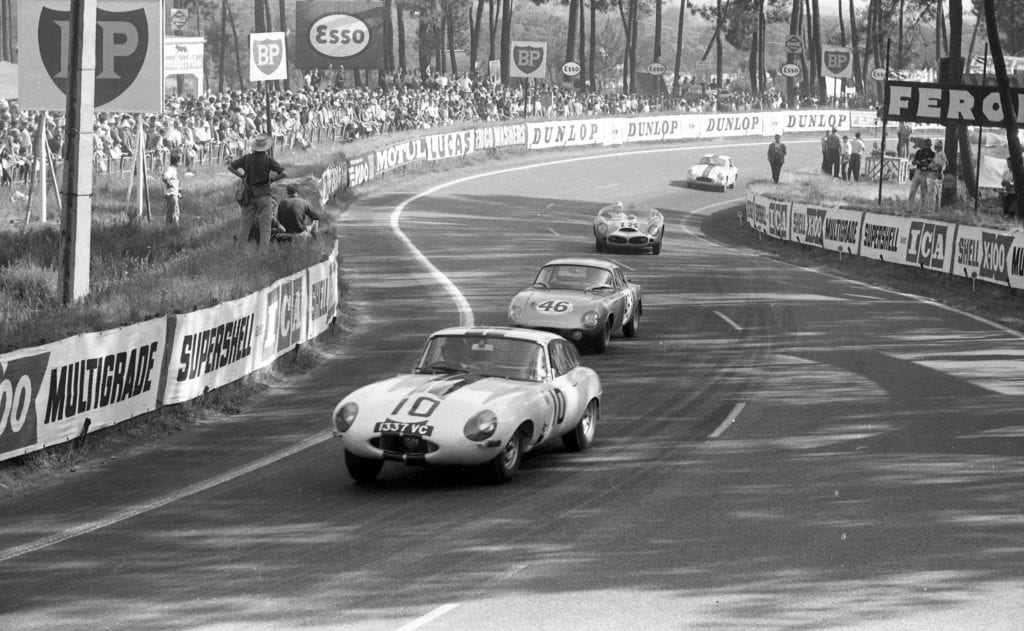
The E-Type’s timing was right, as 1962 saw a change in international racing with championship points going not to all-out race cars such as to D-Type, but production-based Grand Turismos like the E-Type. This led to now-classics like the Ferrari all-conquering 250GTO, Porsche 904, Shelby Cobra and Aston Martin DB4.
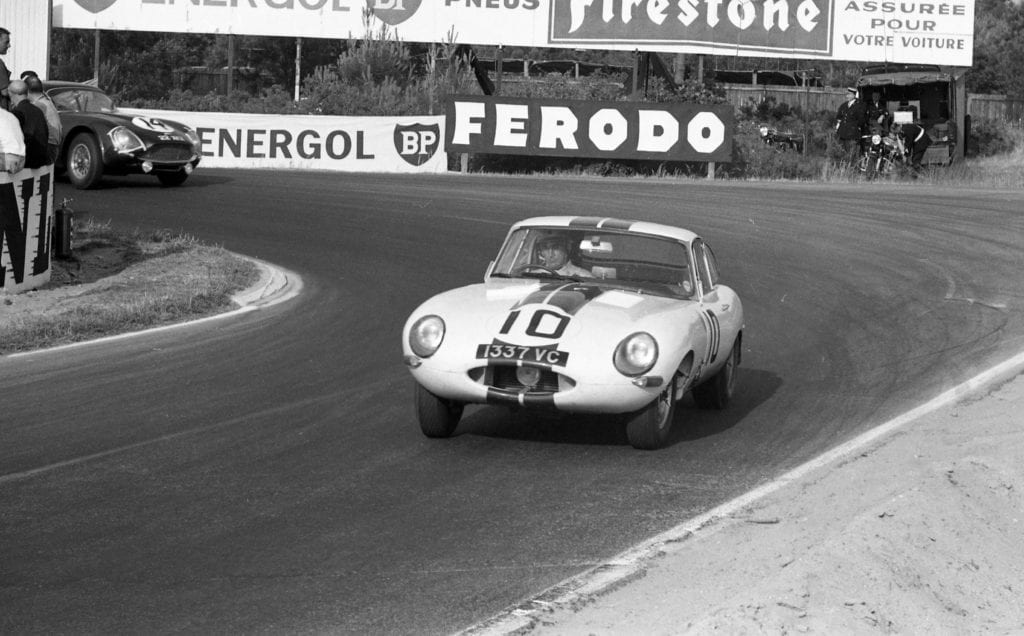
Cunningham entered his E-Type at Le Mans in 1962 and, teamed with Roy Salvadori, finished an impressive 4th overall behind three Ferraris, two of them GTOs. At 108.87 mph, their average was only 5 mph slower than the D-Type’s best. Jaguar created 12 lightweight E-Types, which had some on-track success in Europe, but for most of the world this sports car was known mostly for its beauty and on-road sales success.

In the U.S., however, racing continued when Jaguar had a V-12 in the E-Type. Bob Tullius used his Group 44 E to win the SCCA’s 1975 B-Production National Championship, while Lee Muller was a winner in another E-Type for Huffaker Engineering.
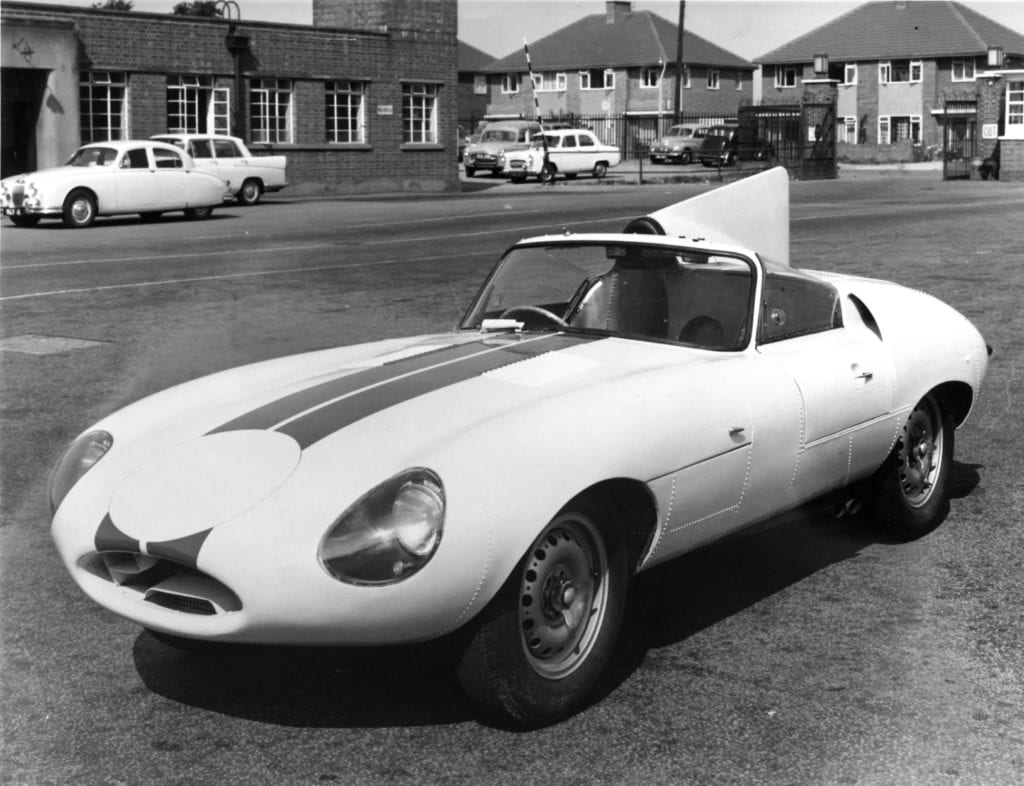
There is a Cunningham racing Jaguar not at Revs that needs to be noted: E2A. Raced in white and blue at Le Mans in 1960, it was the crossover car between the D-Type and E-Type. Dan Gurney and Walt Hansgen drove E2A at Le Mans, where it ran for six hours before dropping out with engine problems.
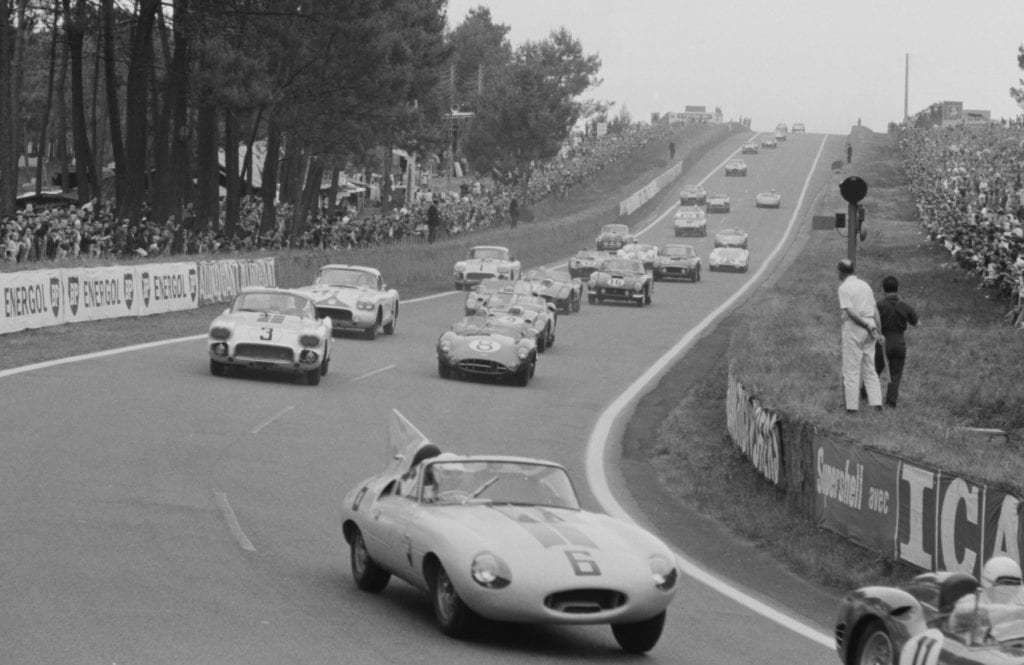
The Revs E-Type will be shown this year at the Amelia Island Concours d’Elegance, from March 9 to 11, following the D-Type’s appearance last year. So the E is successor to the D, in more ways than one.